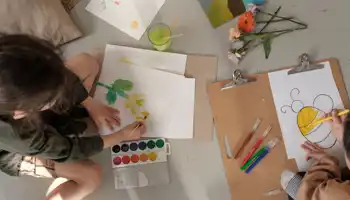Supporting Parents in Shifting Screen Habits with Engaging, Screen-Free Alternatives

Many parents today feel stuck in the tug-of-war between screen time and real-world connection. As a therapist, you can help families reframe the screen-time conversation—not as a battle to eliminate devices, but as a collaborative shift toward more fulfilling, balanced engagement.
The key? Start with purpose, not punishment.
Replacing, Not Just Removing
Instead of encouraging parents to cut screens cold turkey (which often leads to resistance and power struggles), guide them in introducing new boundaries gradually with structure, flexibility, and fun.
You can coach parents to:
- Create a Family Media Plan
Encourage them to set consistent but realistic rules (e.g., “no screens after dinner” or “outdoor time before video games”), so kids know what to expect. - Replace Screens with Engaging Alternatives
Help parents plan activities that are active, sensory-rich, or creatively stimulating. The more engaging the alternative, the easier the transition. - Use Positive Reinforcement
Teach parents to celebrate effort and curiosity, not just compliance. Frame screen-free activities as opportunities for connection and reward them with shared moments (e.g., “After the backyard scavenger hunt, we’ll bake cookies together!”).
Why Screen-Free Engagement Works
Helping parents understand the why can motivate sustainable change. Real-life, hands-on activities offer:
- Emotional Benefits: Nature and play regulate mood, reduce stress, and increase focus.
- Physical Development: Movement-based activities build strength, coordination, and overall health.
- Cognitive and Social Growth: Unstructured play supports problem-solving, teamwork, and independence.
Ideas Therapists Can Offer Parents
Offer screen-free activity ideas tailored to the child’s interests and developmental level. Encourage parents to treat these activities not as "lesser" options, but as exciting invitations to explore.
Nature-Based Adventures:
- Scavenger Hunt: Make a list of outdoor treasures to find, like a cool-shaped leaf or bird’s nest. Check out the new book Let’s Grow on an Adventure for a fun picture book and an awesome scavenger hunt and more
- Backyard Obstacle Course: Use jump ropes, hula hoops, or pillows to create fun challenges
- Cloud Watching and Storytelling: Lay on a blanket and make up stories about the clouds
- Nature Art: Collect leaves, flowers, and twigs to create a nature collage
- Tech-Free Adventure Days: Pick a weekend to go hiking, biking, or exploring a new park
Creative, Hands-On Hobbies:
- DIY Crafts: Try rock painting, homemade playdough, or simple sewing projects
- Music and Movement: Learn a new instrument, create a family dance-off, or explore drumming
- Cooking Together: Teach kids how to make their own snacks or bake a simple recipe
- Journaling or Comic Book Creation: Encourage storytelling through words and drawings
- Gardening: Give kids their own small plot and plant flowers or vegetables together
The Power of Modeling
Therapists can also help parents explore their own screen habits and identify opportunities to lead by example. When children see their caregivers enthusiastically participating in tech-free activities, they’re more likely to follow.
Encourage parents to:
- Be intentional with screen use and use their phone for purposeful activities rather than mindless scrolling.
- Create screen-free zones and designate certain spaces (like the dinner table or bedrooms) as screen-free.
- Get excited about screen-free activities. If they are enthusiastic about hiking, painting, or reading, their child is more likely to be, too.
- Join in! Instead of just telling kids to play outside, parents can go with them to throw a ball, climb trees, play tag, go for a walk or explore together.
A Resource to Recommend
For families ready to take the next step, recommend Let’s Grow on an Adventure: Finding Calm in the Joy of Nature, a picture book that includes printable mindfulness activities like a scavenger hunt, perfect for gently easing into screen-free routines.

By following alongside Jay and Jasper’s adventure, kids will learn the benefits of getting outdoors, slowing down, and appreciating the beauty of the world around them.




